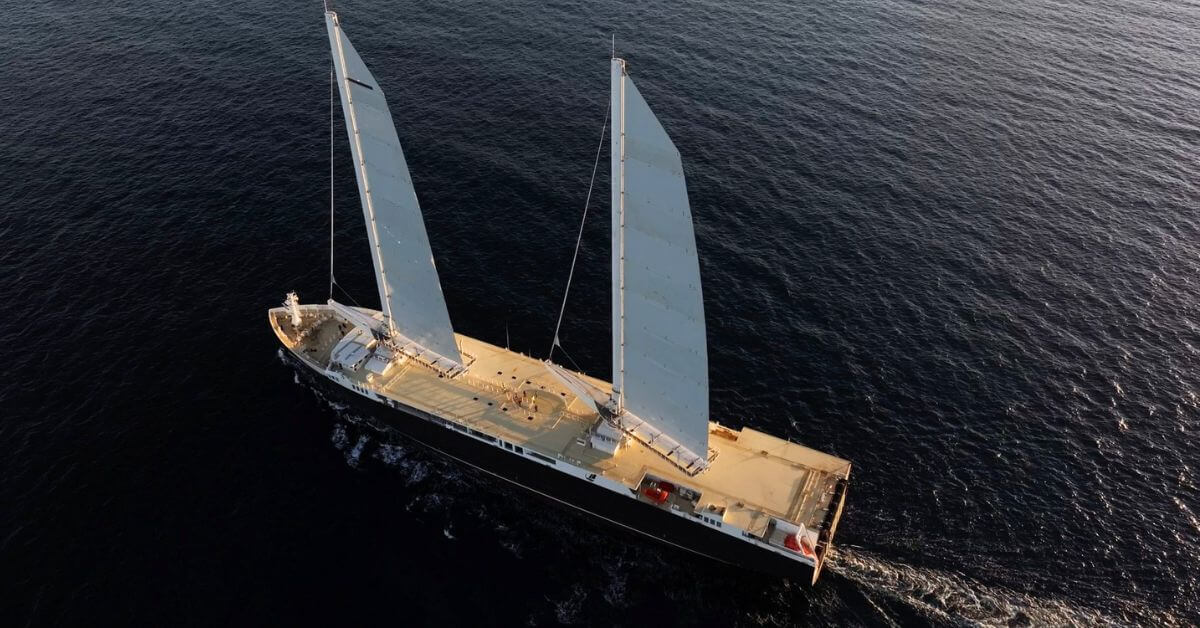Largest cargo sailboat completes first Atlantic crossing


The world’s largest cargo sailboat, Neoliner Origin, completed its first transatlantic voyage on 30 October despite damage to one of its sails during the journey.
The 136-metre-long vessel had to rely partly on its auxiliary motor and its remaining sail after the aft sail was damaged in a storm shortly after departure.
The French-built roll-on/roll-off (RoRo) cargo ship, which has two semi-rigid sails, first stopped at Saint Pierre and Miquelon, a French overseas territory near Canada, before continuing its journey to Baltimore in the United States.
Neoline, the company behind the project, said the damage reduced the vessel’s ability to perform fully on wind power. The company’s CEO, Jean Zanuttini, said the crossing was a valuable experience in handling large sail surfaces across the North Atlantic, especially during late-season storms. He added that despite the difficulties, the ship showed strong resilience by reaching its destination with only a short delay in Saint Pierre.
The Neoliner Origin is designed to reduce greenhouse gas emissions by 80 to 90 per cent compared to conventional diesel-powered cargo ships. According to the United Nations Conference on Trade and Development (UNCTAD), global shipping produces about 3 per cent of worldwide greenhouse gas emissions.
Zanuttini said the company aims to balance industrial needs with environmental responsibility. He added that wind propulsion offers an advantage because it is a free, widely available, and predictable energy source that does not harm ecosystems.

The UK’s National Clean Maritime Research Hub has reported that wind propulsion systems like those on the Neoliner Origin can cut emissions by over 50 per cent on new vessels optimised for wind conditions. Retrofitted vessels can also achieve reductions of 5 to 20 per cent, and up to 30 per cent when adjusted for wind conditions.
The Neoliner Origin was designed by the French naval engineering firm Mauric. The company’s CEO, Vincent Seguin, said the goal was to develop a ship that relies primarily on wind propulsion while ensuring consistent delivery schedules and efficient operation with a smaller crew.
Inspired by historic sailing vessels, the Neoliner Origin integrates modern systems such as advanced navigation, anti-drift mechanisms, and automated sail management to comply with current safety and operational standards.
The ship can carry up to 5,300 tonnes of cargo, including containers, vehicles, machinery, and specialised goods. It arrived in Baltimore carrying Renault vehicles, French liqueurs, machinery, and other products.
The Neoliner Origin is scheduled to make monthly voyages between Europe and North America, maintaining a commercial cruising speed of around 11 knots.
Reference: Reuters
Disclaimer :
The information on this website is for general purposes only. While efforts are made to ensure accuracy, we make no warranties of any kind regarding completeness, reliability, or suitability. Any reliance you place on such information is at your own risk. We are not liable for any loss or damage arising from the use of this website.
Disclaimer : The information on this website is for general purposes only. While efforts are made to ensure accuracy, we make no warranties of any kind regarding completeness, reliability, or suitability. Any reliance you place on such information is at your own risk. We are not liable for any loss or damage arising from the use of this website.
What's Your Reaction?
 Like
0
Like
0
 Dislike
0
Dislike
0
 Love
0
Love
0
 Funny
0
Funny
0
 Angry
0
Angry
0
 Sad
0
Sad
0
 Wow
0
Wow
0








































